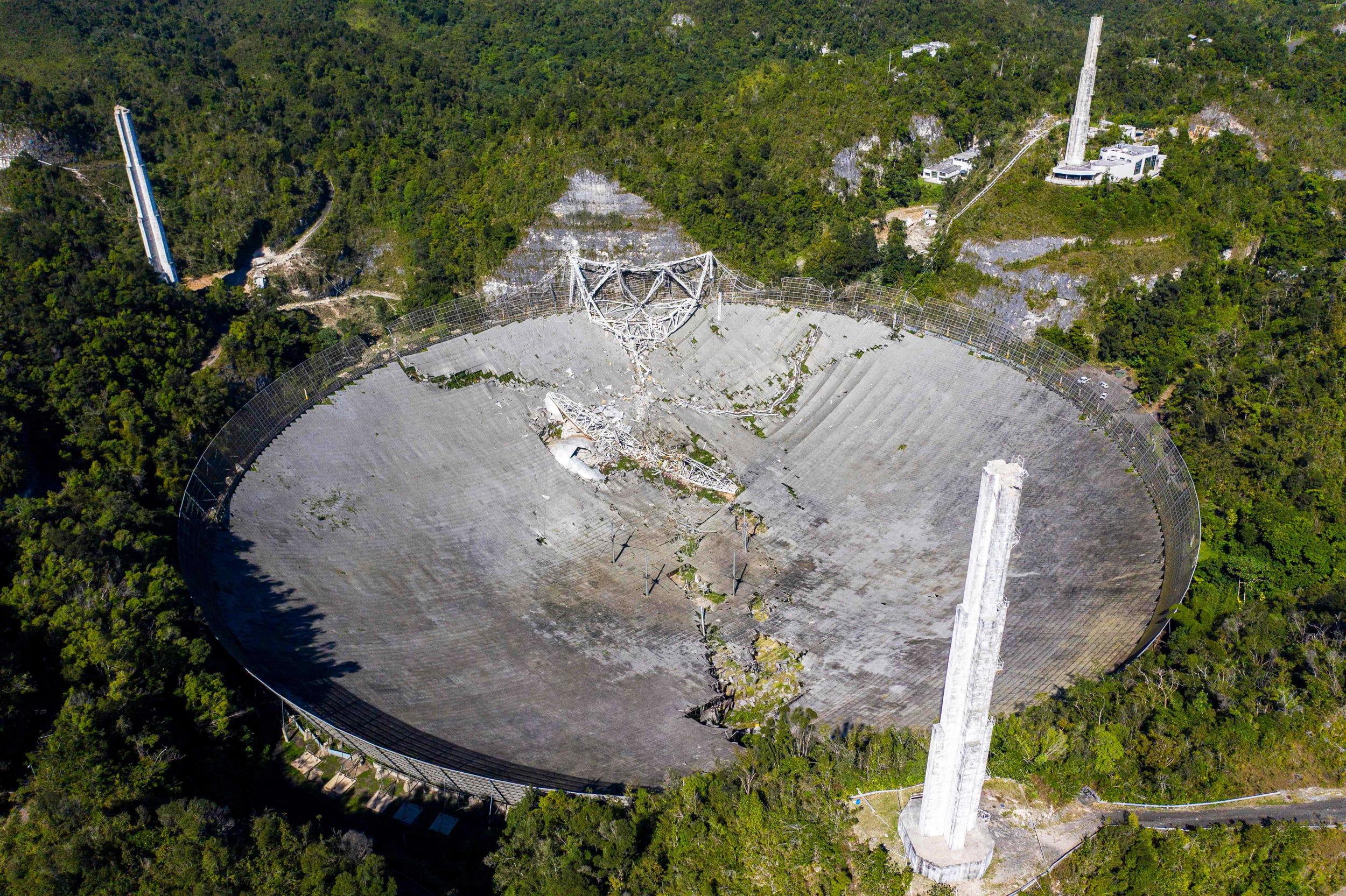Arecibo Telescope: Key Facts
Built in 1963, Puerto Rico’s Arecibo Telescope was built in 1963. It is the second-largest single-dish radio telescope in the world. It was in news recently because of its collapse. It is owned by the US National Science Foundation. It is known for its finding that Mercury rotates in 59 days and not 88 days (original calculation). Apart from its scientific contributions, it is a cultural symbol for Puerto Rico. It attracted around 90,000 visitors annually.
About Arecibo Telescope
The Arecibo Telescope has one of the most powerful radar employed to observe asteroids, planets, ionosphere. The telescope has discovered the first exoplanets, prebiotic molecules in distant galaxies and first millisecond Pulsar. Prebiotic molecules are matter that lead to the origin of life.
The Telescope had served as a hub in the search of extra-terrestrial life and has picked up several radio signals from alien civilisations. It has played a major role in tracking killer asteroids heading towards the earth.
In 1993, the scientists Joseph Taylor and Russell Hulse were awarded the Nobel Prize in physics. With the help of the observatory they monitored a binary Pulsar. It was the first evidence for the existence of gravitational waves.
The telescope had become a symbol of Puerto Rico. It drew more than 90000 visitors every year.
Why did the Arecibo Telescope collapse?
On November 19, 2020, the National Science Foundation of the United States recommended controlled demolition of the telescope as two cables broke off threatening the survival of the observatory. The foundation came to this conclusion after several assessments found that the telescope structure is in danger of catastrophic failure and the cables of the telescope are no longer capable of carrying its weight. The receiver platform of the telescope alone weighs 900 tonnes. The receiver platform collapsed 450 feet into the 1000 feet wide dish.
Earlier, the telescope had survived several hurricanes and earthquakes.
Month: Current Affairs - December, 2020


